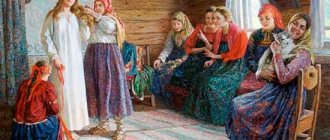The Caucasus is a truly unusual and unique place. Here you will meet people of different nationalities who are united by the culture and traditions of their homeland. One of these is holding Caucasian weddings. It’s not for nothing that they say that this corner of Russia has the most beautiful and exciting celebrations. The Caucasian people are considered one of the most hospitable, so during the holidays there are always a large number of people who are happy to “walk” at the event. In most cases, the wedding celebration lasts for several days in a row, and all the guests tirelessly congratulate the newlyweds. The celebration of the union of two hearts in the Caucasus is accompanied by fiery dances and a luxurious feast.
Traditions and customs
The peculiarity of Caucasian weddings is precisely in observing the old rules. One of these is that the bride and groom do not see each other during the celebration. Each of them celebrates separately in the company of their relatives and friends. Only at the end of the wedding do the newlyweds meet. Now this custom has lost its relevance; its meaning is to distinguish between the society of women and men.
The first appearance of the bride in the groom's house should be solemn. Since ancient times, a girl covered her face with a scarf to protect herself from the evil eye. You must enter the house with your right foot, and lay a sheep's skin near the door. If these rules are not followed, then the newlyweds will not be able to count on a long and happy family life.
The hug tradition is the cutest. Before the first wedding night, the bride must hug all family members, touching a small child is especially appreciated, this is considered a good omen.
A beautiful Caucasian wedding is such due to the custom of giving gifts, among other things. The families of the bride and groom exchange gifts to show their affection. Girls often give something made with their own hands, and guys, in turn, give jewelry.
Wedding in the Caucasus: what traditions are observed here?
A huge number of different nationalities live in the Caucasian countries: Abkhazians, Ossetians, Armenians, Dagestanis, Azerbaijanis, Chechens, etc. All these peoples have a similar unique culture, which is especially clearly manifested in wedding traditions and customs. Let's take a closer look at the most colorful of them.
Wedding without newlyweds
Nowadays this custom is not observed often, but in the history of Caucasian weddings 50 years ago such a tradition was quite common. The bride and groom were not present at the ceremony; on the contrary, they had to hide from all the guests. Usually they locked themselves in a small room where they talked and got to know each other better. Thus, young spouses, who in most cases barely knew each other before the wedding, opened up to each other, which contributed to liberation before the wedding night. Just before her, the newly-made husband and wife appeared briefly in front of the guests, and then left again, but this time for the bedroom.
Long celebration
If a Russian wedding lasts one or two days, then for residents of the Caucasus the celebration lasts at least three days, or even a week. Therefore, if you are lucky enough to be invited to a Caucasian wedding, get ready and gain strength, because national customs will not allow you to sit quietly on the sidelines all the time. Celebration among mountain peoples requires a lot of energy!
Lezginka at a Caucasian wedding
In continuation of the previous paragraph, we will talk about such a colorful phenomenon as Caucasian dances at a wedding. The national dance of mountain peoples is, of course, Lezginka. It is traditionally a couples dance, in which the newlyweds first take part. The groom at the wedding, with his sharp movements, imitates the flight of a predatory eagle, and the Caucasian bride moves smoothly, like a swan. Then all the guests join the young spouses. And until everyone dances, the tradition will not be considered complete.
Long and detailed toasts
If you are invited to a wedding in the Caucasus, be prepared for the fact that you will have to listen to toasts from numerous relatives of the newlyweds for a very long time. On the Internet you can find videos of Caucasian toasts, where guests tell various parables, poems, and simply instructive stories from life, which are sometimes very interesting to listen to. The whole story comes down to praising the strength and intelligence of the groom, as well as the beauty and thriftiness of the bride. As a result, the author of the toast comes to a moral that everyone should drink to. It is believed that the more toasts were made at the banquet, the happier the life of the young people will be.
Matchmaking and bride kidnapping
Traditionally, a wedding in the Caucasus is not the only large-scale event that can affect a couple in love. The groom's match with the bride is a real spectacle. The groom and his numerous relatives come to the doorstep of the potential wife's house with rich gifts. If the bride's parents approve of the candidacy of the future son-in-law, then there will be a wedding. At the same time, young people may not even really know each other. The decisive factor that influences the choice of a Caucasian man is the beauty of the lady he is interested in.
However, the customs of many Caucasian peoples do not prohibit the bride from refusing the wedding if she does not like the groom. Parents who love their daughter will accept her choice and will not insist. But since then she should be careful: the groom might steal her and take her to his home. If an unmarried girl spends the night at a guy's house, she will be considered defamed and will have no choice but to get married. Fortunately, in many countries of the Caucasus, bride kidnapping is already punishable by law, but in remote corners the tradition still persists.
New acquaintances at a wedding
A long, large-scale and beautiful Caucasian wedding is an excellent occasion to form several more young couples. Mountain peoples have large families, numerous relatives, including those not yet related by marriage. And all the unmarried guests are preparing for the banquet: they select beautiful dresses and embroider handkerchiefs in order to find their future husband.
Getting acquainted at a wedding occurs as follows. The guy approaches the girl he’s interested in and starts communicating. At the end of the conversation, the young man serves sweets to his chosen one. If the girl doesn’t mind continuing the acquaintance, she gives the guy an embroidered handkerchief as a souvenir.
Matchmaking
Matchmaking is an essential part of wedding preparations. Previously, all issues in this regard were dealt with by parents, that is, they were the ones who decided the fate of their children. At the age of 12, the girl already knew who she would marry. Of course, a lot depended on the status of the clan; families were not selected at random; marriage should be of equal value. Nowadays, this is considered a relic of the past, as young people themselves choose their brides.
The tradition of matchmaking has been preserved, but not in its entirety. First, a date is set, the groom's first visit to the bride. He comes with his male relatives to visit with the intention of getting married. In turn, the bride's parents may think for a while before giving an answer. If the decision is positive, a date for the second matchmaking is set. It is held solemnly, with laid tables, dancing, etc. At the end of the evening, the father, giving his daughter in marriage, voices a positive decision.
The Legend of Deception
According to legend, Princess Adiyukh (“light-armed” in Circassian) once lived in the tower. During a walk near a mountain stream, Prince Psabid stole her and imprisoned her in a tower. At night he drove himself new herds of horses. To make it easier for him to cross the mountain river on the bridge in the dark, each time Adiyukh stretched out her hands to the moon, and they illuminated the way. The princess was unhappy: she was almost always alone, her beloved Psabid was cold towards her, and they almost never saw each other. One day the prince noticed sadness in Adiyukh’s eyes and asked why she was dissatisfied, living in wealth, having gold and expensive clothes. The princess said that he did not love her and kidnapped her only so that she would illuminate his path. Proud Psabid got angry and shouted that without her light he could find the way himself. And if she tries to light the way, he will cut off her hands with his sword.
Once again at night, Adiyukh heard the clatter of horses, but did not light the path for her beloved, as he ordered. Proud Psabid did not shout Adiyukh. In the pitch darkness, the prince’s horse stumbled, and they drowned in a stormy river.
The princess sobbed over the body for a long time until she found out who her lover really was. It turned out that the prince was killing shepherds and stealing horses. People learned a lot of grief from the sword of Psabida. He always told the princess that he was catching wild horses in the mountain lowlands. The deceived Adiyukh cursed her former lover...
Newlyweds Victor and Raina are cursed by many... for their daring deception. A couple in love deceived their parents, relatives, relatives and friends. In the Caucasus this is not forgiven.
Preparation for the celebration
After the bride’s side agrees, the stage of preparations for the wedding begins. As you know, this is already a lot of trouble, and in the case of the Caucasian holiday there is twice as much trouble. The main part of the costs is borne by the groom's family. A huge number of people are invited to the celebration. For comparison: an ordinary Russian wedding – 50 people, a Caucasian wedding – 300 people. And if all distant relatives and friends come, then the number of guests will exceed 500 people.
The most controversial and attractive tradition is bride kidnapping. Some people consider this a crime, but in the Caucasus region this action is common. The bride is kidnapped in several cases: in case of refusal at matchmaking and a few days before the celebration. In the first case, a guy and a girl prove their love. Caucasian weddings are also famous for the special manifestation of the newlyweds’ feelings. They don’t scream “bitterly” or kiss, but in their gaze and movements you can feel all the power of love that hovers around the bride and groom.
“I’ll give a bride price for you”: how Caucasian weddings take place
Large expenses are never easy, be it for the whole state or for an individual family. An unexpected move was invented in Chechnya. On behalf of the head of the republic, 50 thousand rubles were distributed to the grooms for bride price. The amount is, of course, symbolic. A Caucasian wedding usually costs much more, notes MIR 24 TV channel correspondent Maxim Krasotkin.
The beginning of family life is like the New Year: how you celebrate it is how you spend it. Caucasian youth never skimp on celebrations. Sometimes a wedding is a holiday not only for the bride and groom, but an event for the entire village or city district. Family videos are the envy of Mosfilm and Hollywood. However, much remains behind the scenes.
“It often happens that after a magnificent wedding, the newlyweds are left with several tons of food, photos and videos, but nowhere to live. This, of course, is an excess,” shares the head of the event company Evgeny Abaev.
Chic weddings are a long-standing tradition in the Caucasus. Everything is connected with people's hospitality. Giving the last to the guest is law and custom. So they walk like it’s the last time.
“Perhaps people who do not live in the Caucasus region would be surprised: we have a tradition of blocking the roadway and putting up a tent. Moreover, the tent is set up both for a wedding event and for a ritual one and the same. You can determine whether it is a wedding or a ritual ceremony by the faces of the guests. If there’s a wedding, it means the faces are happy,” says Evgeniy Abaev.
Two cars is more than modest by the standards of a Chechen wedding. Usually dozens of cars bring the bride. But the Daudov family decided otherwise. Relatives greet you, treat you to sweets and say: “Welcome, daughter-in-law! Happiness to you!" Sweets are to make life in the mother-in-law's house sweet. Zharadad married her son.
“Our family did not have the opportunity to celebrate the occasion. My son lost his job, we had a difficult period,” shares the groom’s mother, Zharadat Daudova.
To prevent the newlyweds from taking out loans, the head of Chechnya ordered to allocate 50 thousand rubles to the poor. More than 200 grooms received this amount. The money is not from the budget, but from a charitable foundation. Therefore, the amount was determined by the clergy.
“May the Almighty benefit you from this money! Thanks a lot!"
“I came with my two sons. They found themselves in a difficult position during the pandemic. I am grateful that we received such help!”
In the traditions of the mountains, one must pay a bride price for the bride. At all times it was different and depended on the agreement between families. Some gave in livestock, others in gold. People are simpler than household utensils.
“In fact, this is not so much a payment or purchase as it is compensation for the loss of a worker or a family member. After all, they take a person in the prime of his life to another family. As a sign of respect, they must compensate the parents for this loss,” explains the general director of the National Museum of the Republic of North Ossetia-Alania, Batraz Tsogoev.
Bride kidnapping is also a Caucasian tradition. However, historians argue: this was a last resort. First of all, if there was not enough bride price. In this case, the head of the family, as a rule, disappeared from his native village forever.
“When a person stole his own bride, it was first of all an insult to his parents and an insult to his family name, and two family names at that. Considering that there are related surnames, a person received bloodlines from several surnames,” noted Batraz Tsogoev.
The wedding of Ratmir and Zalina Dokhov took place according to ancient traditions: a banquet hall for all relatives and neighbors. The bride's dresses alone, and there were at least two of them, for different days, cost almost 40 thousand rubles.
“Today we covered 260 people, per person – $17. The menu includes fruits, cold cuts, and five hot dishes,” the waitress shares.
— Did the groom earn money for the wedding himself or do you help?
- Honestly, I don’t know. He handles all these matters. I am a pensioner, I gave what I could. We'll figure it out later.
Of course there was also a bride price. Only in this case was it paid to the bride herself.
“When we sign a Muslim marriage, it is at the request of the husband. This is not a ransom. He can give you a pen; it doesn’t have to be an expensive gift. He gave me earrings,” says Zalina Dokhova.
The wedding traditions of the peoples of Russia differed depending on the region and mentality. But the financial theme was present everywhere in one way or another. For example, in Rus' the bride had to have a dowry. So as not to end up in your new home empty-handed. On the other hand, it was compensation to the husband for taking him as his wife. Indeed, in ancient times, young people often recognized each other only at the wedding. Hence the name bride - who knows what.
“This is called a marriage search. The priest had to search the newlyweds, in Russian, and ask questions. He had to ask, not a brother or sister, what kind of family ties, whether she had been promised to someone else, and after that they were allowed to get married,” explains the creator of the Museum of Weddings, Family and Childhood, Olga Morozova.
In the hands of historian Olga Morozova is a unique document from the beginning of the 20th century - a listing of the bride's dowry. Attached to the marriage certificate of that time.
“Both plates and frames. And 168 volumes of works by Russian writers. This is 1900,” Morozova clarifies.
It became possible to marry voluntarily, and not with the consent of the parents, only under Peter I. But the tradition of a dowry or kalym remained. This was not affected by the change of eras. As well as the concept of a traditional family.
Custom associated with two weddings
It is no secret that wedding celebrations in the Caucasus take place over several days and in several houses. As already noted, previously men and women celebrated separately. Today, everything has changed a little; on the wedding day, the newlyweds are together, but the custom of celebrating two events has remained. The celebration is celebrated both in the groom's house and in the bride's territory.
The girl’s side receives guests first, this happens a few days before the wedding. The lyrical evening, which is organized by the girl’s family, is similar to saying goodbye to home and parting with relatives. The event is shrouded in a note of sadness, but this fact does not spoil the overall impression.
All the guests gather at the groom's place immediately after the marriage ceremony. The celebration turns out to be bright, noisy and cheerful. Where would we be without Caucasian dances at weddings? At the event, the groom's friends show off all their skills, leaving the guests in awe.
“Oh, this wedding sang and danced”
Victor called his mother, told her and asked her to tell all his relatives that he would soon arrive with his bride. On September 26, the couple arrived from Moscow to Karachay-Cherkessia, to their native village of Besleney. The son introduced his companion to his mother.
- This is my fiancée Raina. We'll sign later, in Moscow, and we'll celebrate the wedding here. She is from Dagestan, from the village of Chontaul. Her relatives can’t come, gather all our people. “We’ll go for a walk,” Victor told his mother.
The bride stood nearby, smiled modestly, and hardly raised her eyes. As expected according to local customs, before the wedding Raina was taken to the house of relatives. She lived there for five days.
— Nice girl, modest. Victor made a good choice. And she passed the housekeeping inspection. He washes dishes and floors and cooks well. Today we went together to choose beautiful lingerie for her and bought a peignoir. Raina has a good figure. But, it seems to me, she needs to gain weight a little, she’s too thin,” unmarried young girls discussed the bride in the kitchen.
On the morning of October 1, Raina was noticeably nervous in front of the mirror. I didn’t quite like the hairstyle; the makeup seemed too pale. When she put on a white dress and threw on a veil, she looked at herself in the mirror for a long time. The groom arrived with a noisy company. Relatives and neighbors began to come to the house to congratulate the happy lovers. Women in the kitchen helped prepare for the evening feast.
Five decorated dark cars raced through the village: the bride and groom went to the central village of Khabez for a photo shoot. For beautiful pictures we stopped at the most expensive hotel complex “Adiyukh Palace”. For locals, the hotel complex is like Red Square for newlywed Muscovites.
“We just need to take a couple of pictures on the embankment.” There will be a banquet at our house. I would like a honeymoon room, but yours is a little expensive,” Victor told the employee at the reception.
The newlyweds were allowed to take photographs on the territory of the complex. The bride and groom took a dozen wedding photos. In the photo there is a beautiful couple - everything is as usual in wedding photographs, but only the young people are very tense. This is noticeable in almost all photographs. Here they are on the embankment of the Maly Zelenchuk mountain river, next to the beautiful lawns, on the bridge. One photo became special for them: Victor and Raina specifically asked to be photographed in front of a rocky mountain against the backdrop of the peak on which the tower of Princess Adiyukh stands.
Caucasian bride
As you know, Eastern culture differs significantly from Western culture. For people living in the Caucasus, the girl is a model of chastity. If this is so, then she immediately receives the respect of others. Otherwise, the girl will be shunned, and it will be more difficult to find a chosen one in such a situation.
The bride at the wedding must behave quietly and modestly; she must not laugh loudly, drink, make noise or have fun. In fact, the girl acts more as a decoration of the celebration than as its culprit. As already noted, kissing newlyweds is unacceptable; it is considered an intimate thing. The question arises: what happens at a Russian-Caucasian wedding? Of course, it all depends on the situation. In most cases, Caucasian tenacity prevails, and the word “bitter” is not shouted at the event.
Lezginka at Caucasian weddings
There is no such celebration in this corner of Russia where there will not be an incendiary dance. It’s safe to say that Lezginka plays at every wedding. This dance is considered one of the most beautiful in the world; it adorns every event. The ability to dance is in the blood of Caucasians; they can do it without taking courses or training. The man portrays an eagle, and the woman depicts a gentle swan.
The stunningly beautiful dance is accompanied by loud music and songs. It is worth noting that the bride can only enter the circle after an invitation. The rest of the time she sits at the table, modestly lowering her eyes. The Caucasian incendiary lezginka at a wedding is a decoration of the celebration. Previously, only this kind of music was played at events, but nowadays everything has changed.
Musicians are now invited to the celebration to perform various songs. Therefore, you can hear both popular modern music and Armenian shalaho. But the pearl of the evening was and remains the lezginka. Due to the popularity of dance, there are many schools in Russia that are dedicated to teaching people. Therefore, each of you can go and learn the art of Lezginka.
Shame on the whole family
On the way to the groom's village, we often meet traffic police patrol cars. On this day, local administration officials met a high-ranking civil servant from Moscow at the Mineralnye Vody airport. Our rental car was stopped for inspection twice. Seeing equipment, a camera and a video camera in the trunk, the police wondered why journalists from Moscow had come to them. We begin to explain that we came to find out how one unusual wedding took place in the Caucasus... After the words “unusual wedding,” the inspector’s emotional monologue immediately begins.
“Their wedding disgraced not only two families, the shadow of their shame is not just on two districts - Kizilyurt and Khabez. Shame on the two republics! How did they even think of coming home after something like this? It doesn’t matter what he sewed on himself or what he cut off, he brought a man in a wedding dress into the house. Nobody remembers anything like this in the history of the Caucasus, man on man. We've never had anything like this! And why didn’t any of her relatives understand that she was a man? The whole department looked at their wedding photos - he looks like a man even in a dress,” one of the traffic police inspectors is indignant. He really wanted to continue his speech, but we are running out of time, and we say goodbye.
At the entrance to the village of Beslenei, the road was blocked by a herd of cows: a shepherd was driving the animals to their owners. About ten women and men are waiting for them at a local club. They look at us with curiosity and whisper to each other. Seeing a camera in their hands, most leave in a hurry; a few people remain, already waiting for our questions.
- Who are you? Journalists? - asks a guy about 26 years old.
- Yes, we are from Moscow, we came to sort out this wedding story.
- Well, that’s it, the village is finished. I'm Vitya's classmate. He seemed to be a normal guy, we were even friends for some time, he was so kind, he could always help out. But, on the other hand, could a normal person even do this? A wedding with a man in your native village? It’s good that he didn’t enter our mosques with her, he would have desecrated her. I myself often go to Moscow - there, of course, you have a simpler attitude towards such things, but here it won’t work. It’s better for him not to come here, although I personally don’t care about him or the whole story. He has his own head, he didn’t rob or kill anyone.
Toasts
The Caucasian celebration has many distinctive properties, including beautiful toasts. A short speech can contain either an interesting story or just kind words. Caucasian wedding toasts make guests open their mouths in amazement and admiration. In the process of congratulations, it is customary to give a lot of compliments. It is valuable for a girl when her beauty, modesty and thriftiness are praised, and for a guy - strength, intelligence and courage.
Toast is an art. The speech of professionals in this matter is incredibly eloquent, replete with diversity and originality. A person who attends a Caucasian wedding for the first time can prepare and surprise the guests with his congratulations. Now there are many examples of toasts on the Internet, you just need to find the most interesting and beautiful one. With this step you will gain extra respect and also bring positivity to the event.
Wedding events
After the engagement, preparations begin for the celebrations. This is mainly done by parents. And the bride must arrange a house or apartment where the young family will live. The groom's side purchases the property. If, due to the financial situation of the newlyweds, it is planned to settle in the house of the groom’s parents, then the girl will decorate the allocated wing or rooms. In addition to the dowry for their daughter, parents purchase household appliances and furniture.
Celebration at the bride's house
Previously, under her stepfather's roof, a small farewell feast was organized for the girl to be married off. Nowadays, a full-fledged wedding is celebrated, which, however, has its own unique characteristics. Musicians are located on the roof of the house. From the very morning they begin to perform ritual songs reminiscent of anguished crying. At this time, the girl, amid the lamentations of her surrounding girlfriends, is preparing to leave her parents' house. She sings farewell songs and dresses in wedding attire.
By noon, a procession consisting exclusively of women leaves the groom's house. They carry treats, sweets, jewelry and hand-woven carpets. The groom and other men follow at a distance, singing traditional ritual songs. When guests enter the house, everything brought is put into a chest, which will then be sent with the young wife to a new place of residence. After this, the feast begins.
A girl's entry into married life
In old times, it was on this day or the day before that the wedding ceremony was held in the Islamic tradition. The groom himself, the mullah and the bride's representative, father or senior relative were present.
Nowadays, on the first day of celebrations, the girl’s mother and other relatives, crying and wailing, hand the newlywed over to a new family. However, this transfer is purely symbolic: the bride stays overnight in her father’s house.
Celebration at the groom's house
In the morning on the appointed day, the groom comes for his betrothed and takes her under his arm, into his home. The celebration itself begins after noon. It is on this day that competitions are held, young people boast to each other about their strength and dexterity, competitions and funny pranks are held. Dancing and congratulations follow one after another. At the same time, joint dancing is very rare - men have fun separately from women.
Interesting wedding customs of Dagestanis
The thousand-year-old culture of the Dagestan people is rich in traditions, signs and beliefs associated with weddings.
- The designated wedding celebrations should not coincide with major Muslim holidays or fasting days, or the birthdays of the couple and their parents.
- The mother of the young wife brings diluted honey to the newlyweds so that life is sweet and hassle-free.
- On the threshold of the girl's house, the groom is met by his betrothed's sister and performs a ritual dance.
- Before the newlyweds dance together, the bride must dance with every man present among the guests. He should not touch her, only describe circles and throw coins at her feet.
A special master of ceremonies keeps order at the wedding; he also conducts competitions, says toasts and monitors the performance of rituals.
Wedding feast and toasts
The law of hospitality says: no guest should leave hungry. And greetings and well wishes to the young are heard almost continuously. At the same time, the number of toasts does not at all mean a command to get drunk. On the contrary, excessive consumption of alcohol is severely condemned.
A toast is a rather long parable, the wisdom of our ancestors is often passed down from generation to generation. An experienced toastmaster remembers many such beautiful stories, designed to teach young people about life, to wish well-being and good relationships. Congratulations are also addressed to parents and friends, as well as everyone present. Any wedding guest can raise a glass and say a toast. The main condition is to observe the order and not shout down the speaker.
Songs, dances and entertainment
Of course, where would we be without the traditional Lezginka? A most beautiful dance, during which a young man shows his dexterity, prowess and strength, and a woman must demonstrate modesty and the ability to emphasize the dignity of her partner, and all this action is performed in chic traditional outfits! There is something to look at and show yourself from the most advantageous side. This dance combines the indomitable spirit of Dagestan men and the gentle flexibility of women. Everyone can and loves to dance it, from kids to gray-haired elders.
The dance events are opened by the designated main dancer, after which all interested men can join him. The order is determined by the transfer of flowers: as soon as one dancer gets tired, he passes the bouquet to another, and the applicant chosen from among the guests should not refuse one or two circles. Dancing for the female half of the guests is marked by an invitation to the groom's sister to dance. Only after her can the rest of the ladies enter the circle.
Dancing and singing at a Dagestan wedding are the main entertainment. They last from the beginning to the end of the festival. These include traditional national dances, ritual melodies, and modern popular compositions, and karaoke.
Newlyweds' cortege
Many guests are invited to the celebration dedicated to the merging of two hearts. This means that the tuple must also match. Often it includes several dozen machines. Car riding is quite noisy and fun. All cars honk, notifying everyone around about the joyful event. Young Caucasians are very impulsive, so sometimes you can hear gunshots. The guys shoot in the air, confirming the news of the upcoming celebration.
Traditionally, one of the cars carries carpets that are laid under the bride’s feet so that she does not touch the ground. This custom is not always observed, but it does occur.
Duration of the event
We have already said that Caucasian celebrations are the longest. On average, a wedding is celebrated for two days, and in the Caucasus – three. And all this time the guests never tire of singing, dancing, and, of course, praising the newlyweds. Relatives and friends toast to the courage and perseverance of the groom, as well as the beauty and submission of the bride. According to ancient tradition, the more fun the celebration was, the stronger the newlyweds’ union will be. Therefore, guests spare no effort and celebrate this wonderful holiday with pleasure.
A person who has not attended such a wedding cannot imagine all the beauty of the traditions of this people. Caucasians have a hot temperament combined with a sense of respect for elders and reverence for customs.
Wedding
A week after the first celebration, the wedding day arrives. The bride is dressed in a beautiful dress, wears a lot of jewelry and has an intricate hairstyle. If the family belongs to strongly religious Muslims, then instead of styling they put on a special bandage - a niqab.
After this, a thin white veil is lowered over the bride to cover her from prying eyes. Since in ancient times it was believed that the bride dies for her family in order to be reborn in the groom’s house, the path between them was dangerous for her. It was believed that she would lose the protection of her clan, and evil spirits would want to take advantage of this moment.
In order to prevent otherworldly entities from seeing the girl, she was wrapped in a blanket, which did not allow the defenseless victim to be detected. The white veil was removed after entering the groom's house. Sometimes tradition prescribed that the material should be removed only at the end of the holiday.
At midday, the groom's father knocks on the door of the bride's parents, saying that he has come to get a girl for his son.
After this, the mother and sisters take the bride to the threshold of the house, where the future father-in-law hands her a mirror and a candle. In ancient times, these items were considered extremely valuable, therefore they are a symbol of happiness and prosperity.
The wedding procession moves with songs and national music. At the same time, anyone he met could stand in the way and demand a gift. The groom's father was to present the gift.
When the procession ends, everyone in the groom's house sits down at the festive table. The division into male and female parts is considered traditional; previously the entire event was held in separate rooms, and guests of different sexes did not see each other. Now they are limited to separate meals only.
At the festival, national music should always be played, and performed live.
Also, for entertainment, they invite a toastmaster, who thoroughly knows the mentality and all national customs. Therefore, he can hold competitions that will be of interest to guests.
The main festive feature is a large number of national dances (Lezginka and others, depending on the region of residence). Most often, men participate - such dances require energetic movements, which women, dressed in formal dresses, are not capable of.
But there is a tradition of the newlyweds’ first dance, when the groom dances and the bride flutters around him. The sharp movements of a man and the smooth movements of women look very harmonious and beautiful. The more skill the newlyweds have, the more fascinating everything looks. But before dancing with her husband, the bride must dance with older men. This is necessarily the groom's father, his uncles and grandfather; if there are older married brothers, then the girl dances with them.
Only after this does her lover come out onto the platform.











